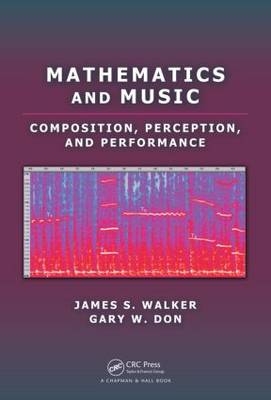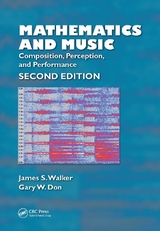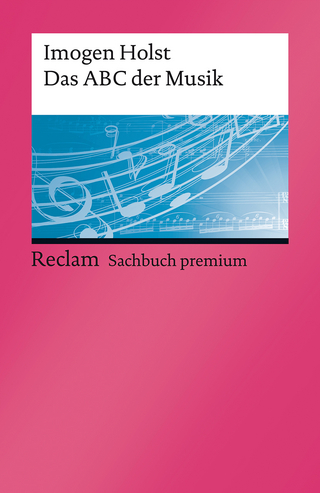
Mathematics and Music
Taylor & Francis Inc (Verlag)
978-1-4398-6709-9 (ISBN)
- Titel erscheint in neuer Auflage
- Artikel merken
In an accessible way, the text teaches the basics of reading music and explains how various patterns in music can be described with mathematics. The authors extensively use the powerful time-frequency method of spectrograms to analyze the sounds created in musical performance. Numerous examples of music notation assist students in understanding basic musical scores. The text also provides mathematical explanations for musical scales, harmony, and rhythm and includes a concise introduction to digital audio synthesis.
Along with helping students master some fundamental mathematics, this book gives them a deeper appreciation of music by showing how music is informed by both its mathematical and aesthetic structures.
Web Resource
On the book’s CRC Press web page, students can access videos of many of the spectrograms discussed in the text as well as musical scores playable with the free music software MuseScore. An online bibliography offers many links to free downloadable articles on math and music. The web page also provides links to other websites related to math and music, including all the sites mentioned in the book.
Pitch, Frequency, Musical Scales
Pitch and Frequency
Overtones, Pitch Equivalence, and Musical Scales
The 12-tone equal-tempered scale
Musical Scales within the Chromatic Scale
Logarithms
Basic Musical Notation
Staff Notation, Clefs, Note Positions
Time Signatures and Tempo
Key Signatures and The Circle of Fifths
Some Music Theory
Intervals and Chords
Diatonic Music
Diatonic Transformations—Scale Shifts
Diatonic Transformations—Inversions, Retrograde
Chromatic Transformations
Web Resources
Spectrograms and Musical Tones
Musical Gestures in Spectrograms
Mathematical Model for Musical Tones
Modeling Instrumental Tones
Beating and Dissonance
Estimating Amplitude and Frequency
Windowing the Waveform: Spectrograms
A Deeper Study of Amplitude Estimation
Spectrograms and Music
Singing
Instrumentals
Compositions
Analyzing Pitch and Rhythm
Geometry of Pitch Organization and Transpositions
Geometry of Chromatic Inversions
Cyclic Rhythms
Rhythmic Inversion
Construction of Scales and Cyclic Rhythms
Comparing Musical Scales and Cyclic Rhythms
Serialism
A Geometry of Harmony
Riemann’s Chromatic Inversions
A Network of Triadic Chords
Embedding Pitch Classes within the Tonnetz
Other Chordal Transformations
Audio Synthesis in Music
Creating New Music from Spectrograms
Phase Vocoding
Time Stretching and Time Shrinking
MIDI Synthesis
A Exercise Solutions
B Music Software
C Amplitude and Frequency Results
D Glossary
E Permissions
Bibliography
Index
| Zusatzinfo | 8-pg, 16 fig color insert follows page 144; 15 Tables, black and white; 343 Illustrations, black and white |
|---|---|
| Verlagsort | Washington |
| Sprache | englisch |
| Maße | 178 x 254 mm |
| Gewicht | 710 g |
| Themenwelt | Kunst / Musik / Theater ► Musik ► Musiktheorie / Musiklehre |
| Mathematik / Informatik ► Mathematik | |
| Naturwissenschaften ► Physik / Astronomie | |
| ISBN-10 | 1-4398-6709-7 / 1439867097 |
| ISBN-13 | 978-1-4398-6709-9 / 9781439867099 |
| Zustand | Neuware |
| Informationen gemäß Produktsicherheitsverordnung (GPSR) | |
| Haben Sie eine Frage zum Produkt? |
aus dem Bereich



